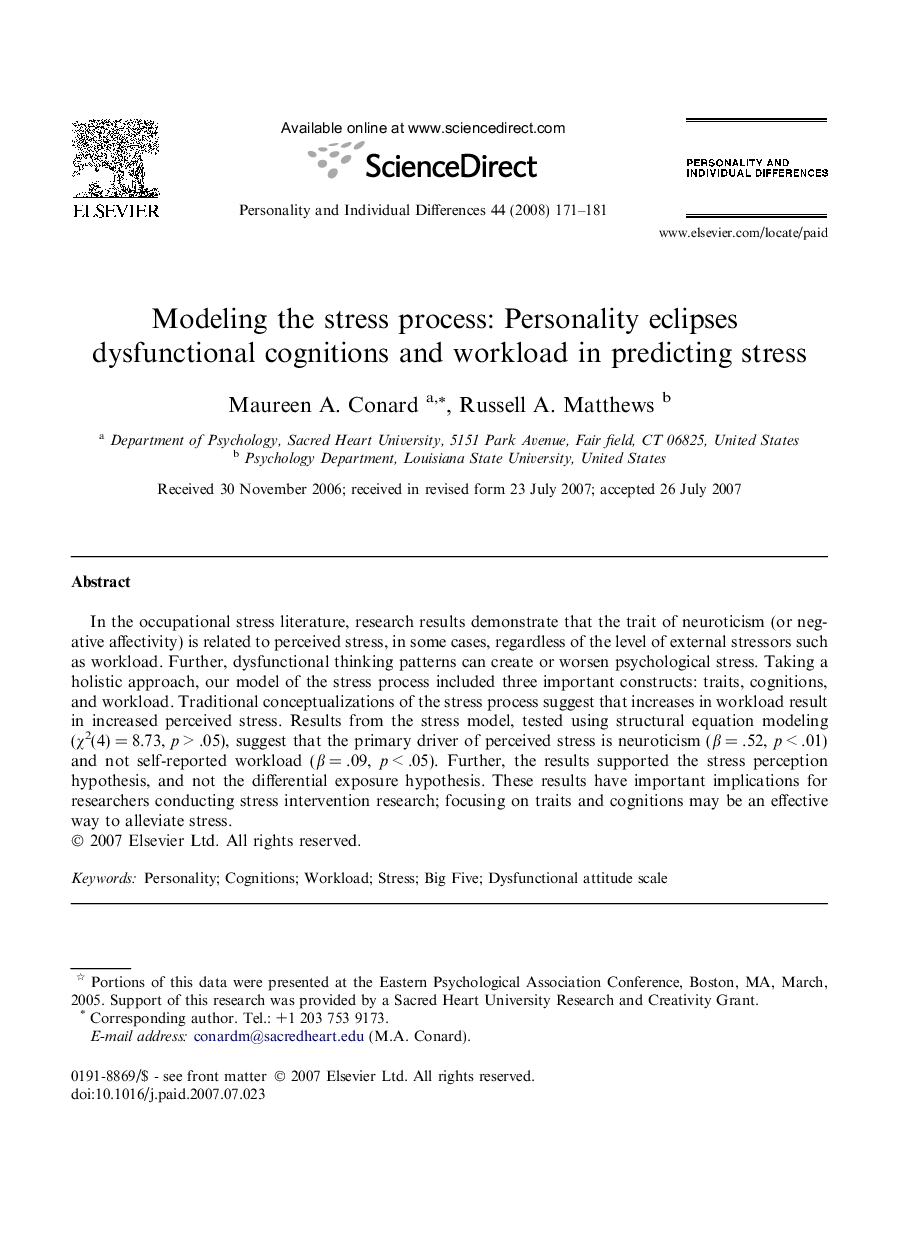| Article ID | Journal | Published Year | Pages | File Type |
|---|---|---|---|---|
| 893071 | Personality and Individual Differences | 2008 | 11 Pages |
In the occupational stress literature, research results demonstrate that the trait of neuroticism (or negative affectivity) is related to perceived stress, in some cases, regardless of the level of external stressors such as workload. Further, dysfunctional thinking patterns can create or worsen psychological stress. Taking a holistic approach, our model of the stress process included three important constructs: traits, cognitions, and workload. Traditional conceptualizations of the stress process suggest that increases in workload result in increased perceived stress. Results from the stress model, tested using structural equation modeling (χ2(4) = 8.73, p > .05), suggest that the primary driver of perceived stress is neuroticism (β = .52, p < .01) and not self-reported workload (β = .09, p < .05). Further, the results supported the stress perception hypothesis, and not the differential exposure hypothesis. These results have important implications for researchers conducting stress intervention research; focusing on traits and cognitions may be an effective way to alleviate stress.
